The content of the article
- 1 What is a plant
- 2 The composition and benefits of horseradish
- 3 The healing properties of horseradish
- 4 The use of horseradish in alternative medicine
- 5 The benefits of horseradish for the liver
- 6 The benefits of horseradish juice
- 7 Horseradish contraindications
- 8 Video: the healing properties of horseradish
Horseradish is everyone’s favorite spicy seasoning that goes well with aspic and other dishes. But few people know that the root has wonderful healing properties. It can rightly be considered a panacea for many ills, not counting complex diseases. Horseradish root and juice based on it are in demand. But in order not to be unfounded, we consider the useful properties in more detail. We will also study the harm.
What is a plant
Horseradish is a perennial plant that is resistant to frost and temperature extremes. The root is common in our country, Europe, Asia and other regions where there is no permafrost. The plant will survive the cold, but will not be able to constantly grow in such weather. In the wild, roots spread along rivers and other water sources.
Horseradish belong to the cabbage family. The plant reaches 1.5 m in height, and the length of its foliage varies between 18–55 cm. The leaves are collected in a bunch, horseradish has a large root, which is often used in folk healing.
The plant begins to bloom in 12-13 months following planting. In the process, small white flowers appear, from which oval-shaped fruit pods are subsequently formed. The length of these pods is approximately 5.5 cm. Flowering occurs in the period from early July to mid-late August. There are four seeds in the pod box.
Almost all people are familiar with the harsh aroma and the specific taste of horseradish. By its popularity, it is equal to mustard and other hot seasonings. In addition to the basics for snacks, horseradish has valuable qualities, their folk healers are happy to use in alternative medicine.
The composition and benefits of horseradish
For other reasons, only the root of the plant is used as a food product and for oral administration. But in medical practice, the use found foliage and juice from the roots. Horseradish is used as a composition from many ills thanks to a unique list of useful elements.
So, it concentrates poly- and monosaccharides, organic acids, protein compounds, starch, minerals, an extensive vitamin complex. In addition, the product is not deprived of fats, tarry and nitrogenous compounds.
If we list the elements in more detail, the situation will be as follows. In the composition of horseradish, aluminum, iron, magnesium, manganese, phosphorus, sodium, potassium, sulfur, copper, calcium and chlorine are extracted from minerals.
As for the vitamin list, a special place is given to group B. Horseradish roots accumulate thiamine, pyridoxine, folic acid, niacin, riboflavin and other B-group vitamins.
Not without the participation of ascorbic acid, tocopherol, retinol, beta-carotene. The composition of the roots is 5-6 times more vitamin C than in the notorious lemon.
Horseradish owes its smell to essential oils, which accumulate in the base of roots. Esters have bactericidal and anti-inflammatory properties.
The juice contains lysozyme, it kills harmful microorganisms, eliminates slagging and toxins. The compound is present in saliva and tear, but when a person becomes ill, lysozyme is destroyed and can no longer perform its functions. Therefore, the body becomes vulnerable and is exposed to various kinds of bacteria.
With the systematic intake of horseradish for food, the likelihood of contracting the flu, SARS, and other respiratory ailments is reduced.Peroxidase is present in horseradish, the enzyme is added to drugs to combat HIV.
Due to the fact that the plant contains only natural saccharides, horseradish roots are indicated for use in patients with diabetes. The plant suppresses jumps in glucose, improving the course of the disease.
The composition contains antioxidants, presented in the form of tocopherol, retinol and other beneficial substances. They suppress the action of toxic compounds, cleanse the liver and other internal organs.
Recent studies have shown that even a small piece of horseradish, chewed for 10 minutes daily, prevents diseases of the oral cavity, in particular caries, stomatitis, bleeding gums, etc.
The product contains mustard oil, which has the ability to enhance appetite and increase intestinal motility. The plant accelerates the secretion of juice in the stomach, which reduces the frequency of food fermentation in the esophagus. In addition, mustard oil prevents the formation of stones and sand in the kidneys, bladder. This is made possible by diluting bile.
The healing properties of horseradish
The root is recognized as an effective compound in alternative and traditional medicine. He is valued for the following abilities:
- reduced food fermentation in the intestinal cavity;
- withdrawal of sputum from the respiratory tract;
- relieving diabetes mellitus;
- prevention of urolithiasis;
- reduction of bleeding gums, treatment of ailments of the oral cavity;
- the fight against parasites (worms, etc.);
- scurvy prophylaxis;
- withdrawal of excess fluid.
Horseradish is an effective remedy for diseases such as:
- gout;
- sinusitis;
- colpitis;
- bronchitis, pneumonia;
- asthma;
- acute hepatitis;
- cough;
- gastrointestinal ailments;
- inflammatory processes of the sciatic nerve;
- Crick;
- joint pain.
Healers use roots as a means to remove excess fluid and reduce swelling. Fresh and decoction on the leaves treat kidney ailments. If there is back pain, it is necessary to apply crushed gruel from the roots, the sprain and muscle soreness are treated with the same means.
Improving the condition and relieving discomfort is due to the warming effect of the plant. These compresses effectively cope with rheumatism, gout, arthritis, radiculitis. In order not to get burns, it is advisable to place the grated horseradish on 1-2 layers of gauze and then apply it to the sore spot.
The plant is often used to eliminate furunculosis, inflammation, mastitis. Traditional medicine recommends taking a powder from the seeds of a plant in order to resist oncological ailments.
The use of horseradish in alternative medicine
Lemon and horseradish juice
To prepare the composition, you need to grind the horseradish root and squeeze 130 ml through cheesecloth. juice. Stir in 3 fresh lemons. Stir the ingredients thoroughly and drink 15 ml each. twice a day. In the morning before eating and in the same way for lunch.
The remedy copes well with sinusitis, asthma, sinusitis, poor appetite, neoplasms in the form of sand in the cavity of the kidneys and bladder. Consider, when taking the remedy, you need to completely abandon dairy and sour-milk products.
Honey and horseradish juice
Pass through the meat grinder 1 kg. horseradish root. Pour the resulting slurry 3 liters. boiling water. Insist a remedy of the order of 10-14 hours. Strain the healing composition. The procedure is best performed using gauze folded in several layers.
In the finished product you need to mix 1 kg. flower honey. Set the composition on the stove and simmer over low heat until a state close to boiling. Wait for cooling. Drink 50 ml each. 3 times a day before meals.
The duration of the course is a month. After this, you must take a break of 3 weeks. Further the procedure can be repeated. The tool effectively copes with severe edema and dropsy.
Water and horseradish juice
Grind the root of the plant and combine the gruel with filtered water. The ratio of components should be taken 1 to 10. Insist the product for several hours, do not forget to strain. The composition perfectly increases appetite and fights bacteria in the oral cavity and throat.
Therefore, the drink can be used as a rinse for the treatment of colds. No less useful qualities have horseradish leaves. Greens are applied to sore joints and back. Insulate yourself with a scarf during illness.
The benefits of horseradish for the liver
To improve the health status of hepatitis, a healing agent will help. For cooking, 1 kg is required. grated horseradish root and 3 liters. boiling water. Connect the components and close with a sealed lid in a convenient container.
Insist the composition throughout the day. Strain by classic technology. Drinking infusion is recommended for 120 ml. 3 times a day.
With cirrhosis of a vital organ, you need to combine 6 grated horseradish leaves and 450 ml. vodka. Infuse the product for at least 1 week. After the set period has passed, strain the tincture.
Drink 30 ml. composition three times a day for half an hour before a meal. The course of treatment is 1 month. This is followed by a weekly break. If necessary, repeat the procedure. Store the tincture in the refrigerator.
The benefits of horseradish juice
- The drink has proven itself in the treatment of scurvy, enhancing cravings for food and improving the digestive system. Juice is used as an expectorant and diuretic. The composition copes with kidney stones and the bladder.
- Juice is often used as an anesthetic for various ailments. It is enough to attach lotion to the inflamed place.
- Fresh acts as an effective tonic. It helps with physical fatigue. Juice is also used as a mouthwash for sore throat, toothache and stomatitis.
- In folk medicine, you can find many medical recipes. Honey, in combination with plant root juice, effectively copes with liver pathologies. The fluid is used in combination to grind inflammation in diseased joints, rheumatism, skin ulcers and poorly healing wounds.
- Many people don’t like to drink pure horseradish juice because of its hotness and unpleasant taste. In this case, the composition can be diluted with lemon fresh. The drink increases appetite, helps with intestinal atony, edema and kidney pathologies.
- For the prevention of various diseases and health promotion, it is recommended to take 15 ml. horseradish juice 4 times a day. An alternative may be mashed from the root of the plant. The composition needs to be eaten 1 time per day for 15 grams.
- Horseradish helps improve diabetes. Combine the plant root juice and natural yogurt in a ratio of 1 to 10. The second component can be replaced with yogurt.
- To stabilize blood pressure with hypertension, you need to combine the juice of horseradish root, carrots and beets. Take 200 ml. each component and add fresh 1 lemon. Stir the food and store in the refrigerator. Drink 120 ml. 3 times a day.
- To normalize blood pressure, you can prepare an infusion based on horseradish and water. To do this, grind the root of the plant and fill it with filtered water. Insist the remedy for two days. The tool also perfectly removes age spots and freckles. It is enough to use raw materials as a tonic.
Horseradish contraindications
- Due to the sharp aroma and burning taste, horseradish negatively affects the mucous membranes. In order not to encounter a number of troubles, it is important to observe the daily rate of the product.
- Horseradish is forbidden to eat with gastrointestinal pathologies during an exacerbation. This category includes people with kidney disease who are diagnosed with pancreatitis and individual intolerance.
- It is not recommended to include the plant in the diet of young children under 8 years old.Also, do not eat horseradish for the fair sex during gestation and during breastfeeding.
Horseradish has many beneficial qualities. With a plant, you can improve your health and get rid of a number of diseases. It is important to store the product correctly, especially when frayed. The valuable composition of the raw materials in this state quickly disappears. Store the pulp in a glass sealed container, use if necessary. Learn the benefits of horseradish juice and add it to your family’s daily diet.
Video: the healing properties of horseradish


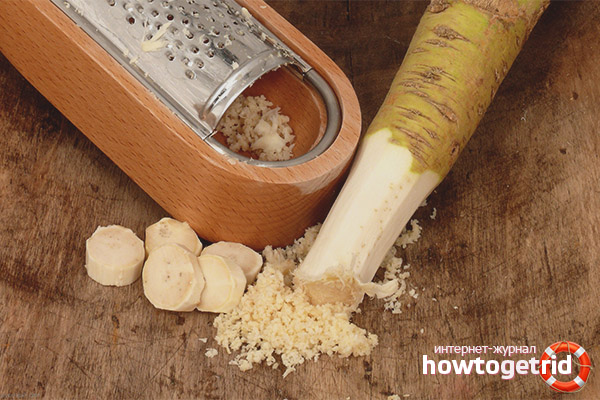
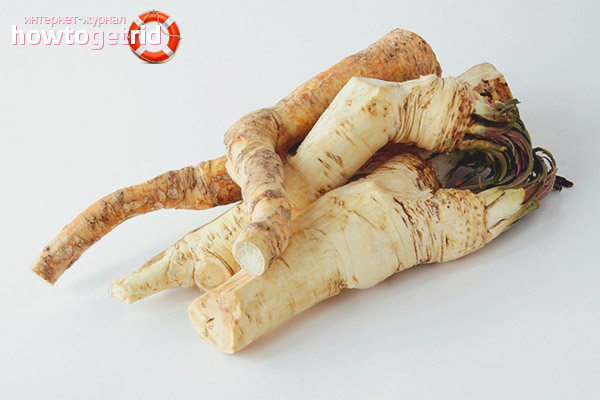

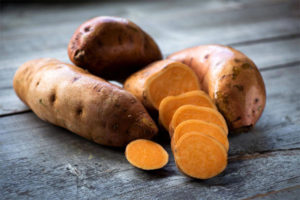
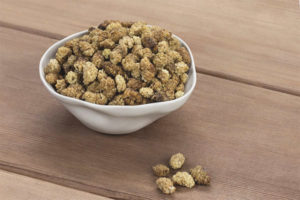
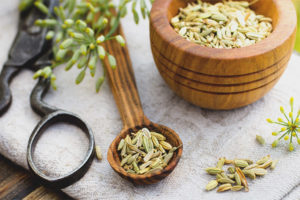
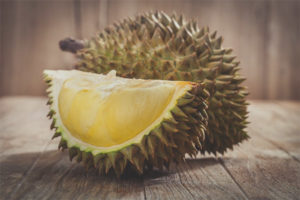

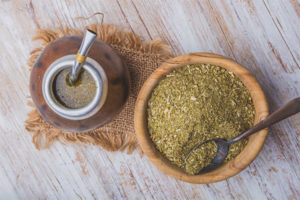
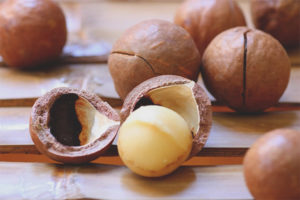
Submit